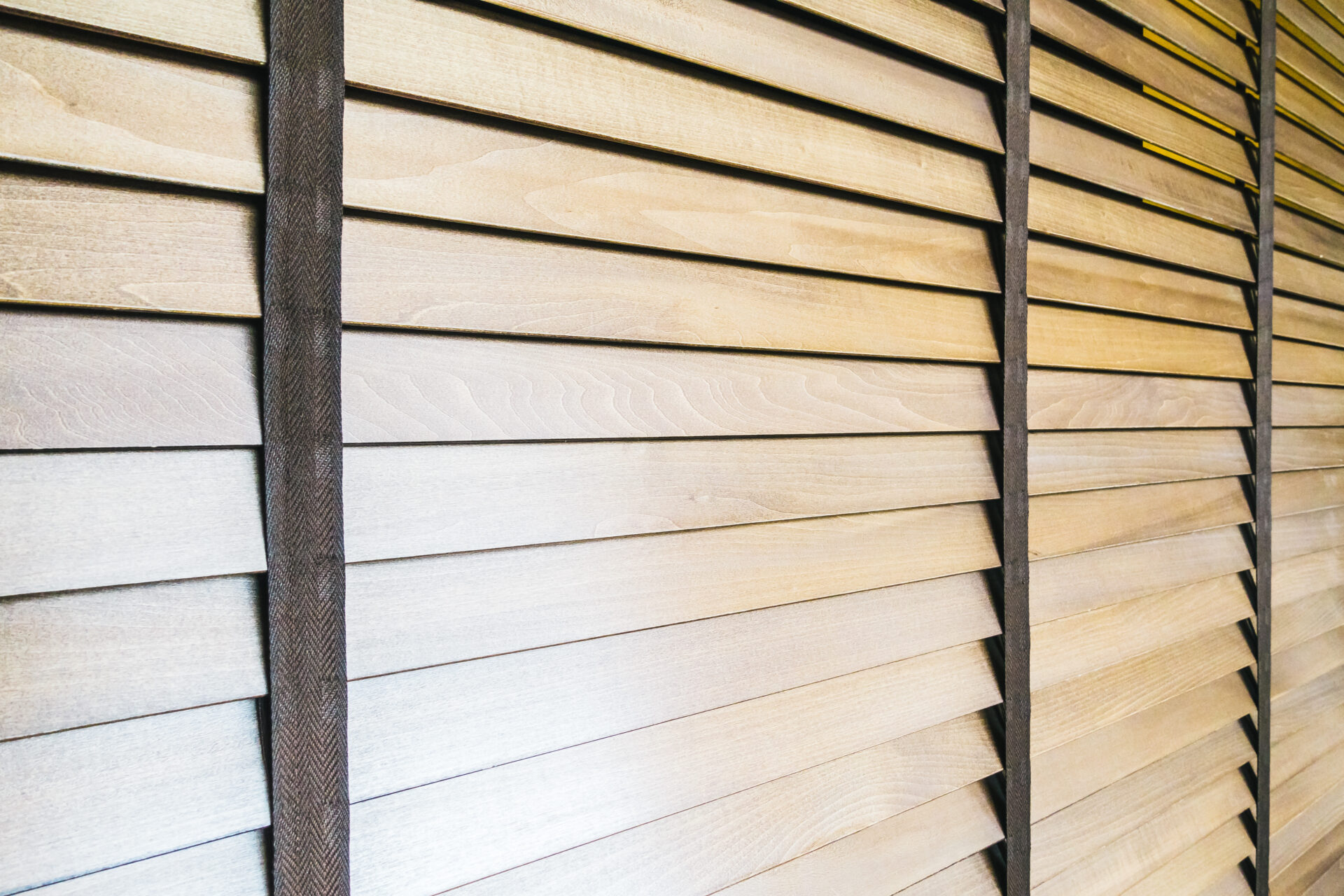When it comes to choosing the best window treatment for your home, one always imagines wood blinds as the ideal option. After all, nothing beats the warmth and smell of wood in your home. More than just window treatments, wood blinds are also an accent piece that can elevate the interiors of your home. However, wood blinds are not entirely without any setbacks. And this is where choosing between real wood blinds from faux wood blinds comes in.
How do wood blinds and faux wood blinds compare
Find out which wood blind type is better for your home, the real wood or faux wood? From moisture resistance to cost difference, we have found all the important information you need to know about getting the ideal wood blinds for your home.
Matches wood finishings
Matching window treatments to other finishings in your home is a great way to spruce up the wood tones in your interior. Real wood blinds and faux wood blinds can match any decor and style. While closely similar, wood and faux wood blinds do have some differences. It starts from the effect of the wood finishings.
Real wood blinds offer natural-looking finishes that bring warmth and elegance to your home. Wood blinds can be made to match other wood finishes such as furniture and floors. Real wood blinds provide superior privacy with their thickness as well as the tight closure of the slats. Faux wood blinds, on the other hand, offer a more flexible alternative to real wood blinds. Staining faux wood blinds with a wide variety of natural colors offer a natural complement to your wood furniture or other furnishings. So, if you’re having doubts as to whether faux wood blinds can match natural wood finishings, staining your faux wood blinds is the way to go.

Greenguard protection
Both wood blind and faux wood blinds are capable of having Greenguard Protection. Products with Greenguard protection are scientifically proven to meet the highest standard possible of creating a healthier indoor environment. Greenguard protection helps manufacturers make products with low chemical emissions. In buying wood blinds for your windows, make sure that the options have Greenguard protection. For example, both real wood blinds and faux wood blinds of the Whole Blind Factory are secured with Greenguard protection.
Natural insulator against cold and heat
Blinds that perfectly fit your window are ideal for reducing heat from outside. Wood blinds are natural insulators. They work by closing out the heat of summer and regulating the amount of glare coming into your home. However, wood blinds are better in keeping the warmth out of your house, but not so much in holding the heat in. The gaps between the slat can speed up heat loss. Similarly, faux wood blinds provide a high level of insulation and sunlight blockage. If you are not sure which one is better for your home, consult a professional window specialist to help you out.
Moisture resistant
This is where the huge difference comes in. With real wood blinds, too much moisture can compromise the quality of the natural wood. Eventually, your wood blinds become more hollow and even lead to damage costs. Since real wood is more prone to accumulate moisture, this can lead to fungal or bacterial growth that will soon compromise the wood. In application, window covering solutions in high humidity areas like bathrooms and kitchens should naturally have the capability to withstand moisture. On the other hand, faux wood blinds are the best type of blind for the rooms in your home with high humidity. Faux wood blinds are moisture-resistant blinds that can withstand moisture and avoid fungal growth. Choose faux wood blinds to incorporate a more natural-looking material and without compromising quality.
Warp resistant
Another factor that makes faux wood blinds more desirable is their warping resistance. Wood blinds can warp in high humidity, whereas faux wood blinds prove to be much better in covering your windows. Real wood blinds tend to be vulnerable with high UV exposure, as a result, the wood will fade. Wood warping happens when there is a deformity or uneven surfaces on the wood from moisture buildup. This changes the form of the wood. With faux wood blinds, you can prevent warping from happening. After all, faux wood blinds are warp-resistant blinds since they are mostly made of vinyl.
Looks like wood but is less expensive
There’s no denying that faux woods are more affordable than real wood. The faux wood blinds are a cost-effective and economical choice since you’ll be spending less on repairs and coatings. In contrast, real wood blinds have higher costs than faux wood blinds because the former entails more labor work. Faux wood blinds also give you more financial security in the long run. You won’t be spending much on damage from moisture and warping. Unlike real wood blinds, faux wood blinds are easier to manage and clean.

Have you decided yet? If you are still thinking about which one to choose, our team can help! Our team at Wholesale Blind Factory has experts you can trust and rely on when it comes to quality wood blinds. Our wood blinds are secure with 100% quality in terms of materials and workmanship. Most importantly, the products that we offer are Greenguard certified for a much safer environment. Give us a call on 📞 (604) 942-4201 today and get started with our finest wood window blinds and shades for maximum safety and comfort in your living space.




